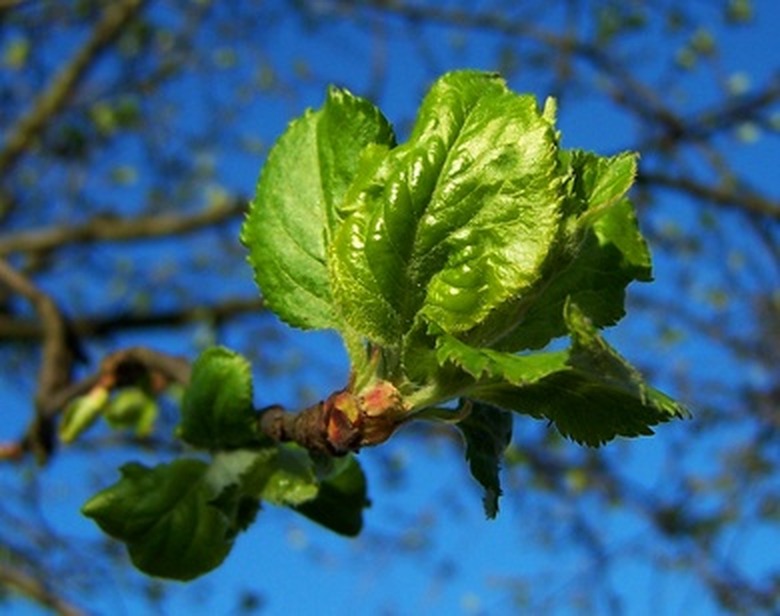What Are The Functions Of Bud Scales?
Once leaves fall from a tree, new leaf buds form at the end of a branch or stem. In cooler, temperate climates that experience cold and snowy winters, these buds take the form of small, modified leaves that look like miniature scales. The largest of these scaled buds are found at the ends of branches and are called terminal buds. Smaller ones, called auxiliary buds, form where the leaf and branch come together.
Identification
Identification
Buds and bud scales can be used to help identify different types of trees. The color, size and shape of scaled buds differ depending on the species of tree. Bud scales are also used in determining whether a tree comes from a tropical or temperate climate. In tropical climates trees don't go through periods of dormancy, and as a result the buds that form on those trees are termed "naked" buds because they don't have the protective scales that a tree in a temperate climate would.
Protection
Protection
Bud scales act as protection for newly formed leaves and branch growth. They form at the end of the growing season once the leaves have fallen off the branches. Bud scales form in preparation for both new leaves and the extension of a stem's growth. During a tree's dormant season, these scaly, pseudo-leaves surround the embryonic growth and protect it from the elements until the tree is ready to restart its growth cycle. Once the stem or leaf begins to grow again in the spring, the bud scales open and eventually are shed by the tree once the growth inside reaches full maturity.
Stem Dating
Stem Dating
While a tree's age can be determined by counting the number of rings found in its base, a different method is needed to figure out the age of specific branches or stems. Each spring, as the buds break open to release the newly formed section of the stem, the scales drop off and fall to the ground. Because these scales were once attached to the stem itself, at the point where they've broken off a small scar forms. Like the buds, these bud scale scars are created once every year. That means each set of scars along a stem's length represents one year of growth for the branch. By counting all of these scars it's possible to determine the exact age of a branch. An important thing to remember when using this method to date a branch or stem is to ensure that the scars being documented are bud scale scars and not scars left behind from falling leaves.
Cite This Article
MLA
Robitaille, Joanne. "What Are The Functions Of Bud Scales?" sciencing.com, https://www.sciencing.com/what-are-the-functions-of-bud-scales-12357145/. 21 July 2017.
APA
Robitaille, Joanne. (2017, July 21). What Are The Functions Of Bud Scales?. sciencing.com. Retrieved from https://www.sciencing.com/what-are-the-functions-of-bud-scales-12357145/
Chicago
Robitaille, Joanne. What Are The Functions Of Bud Scales? last modified March 24, 2022. https://www.sciencing.com/what-are-the-functions-of-bud-scales-12357145/
